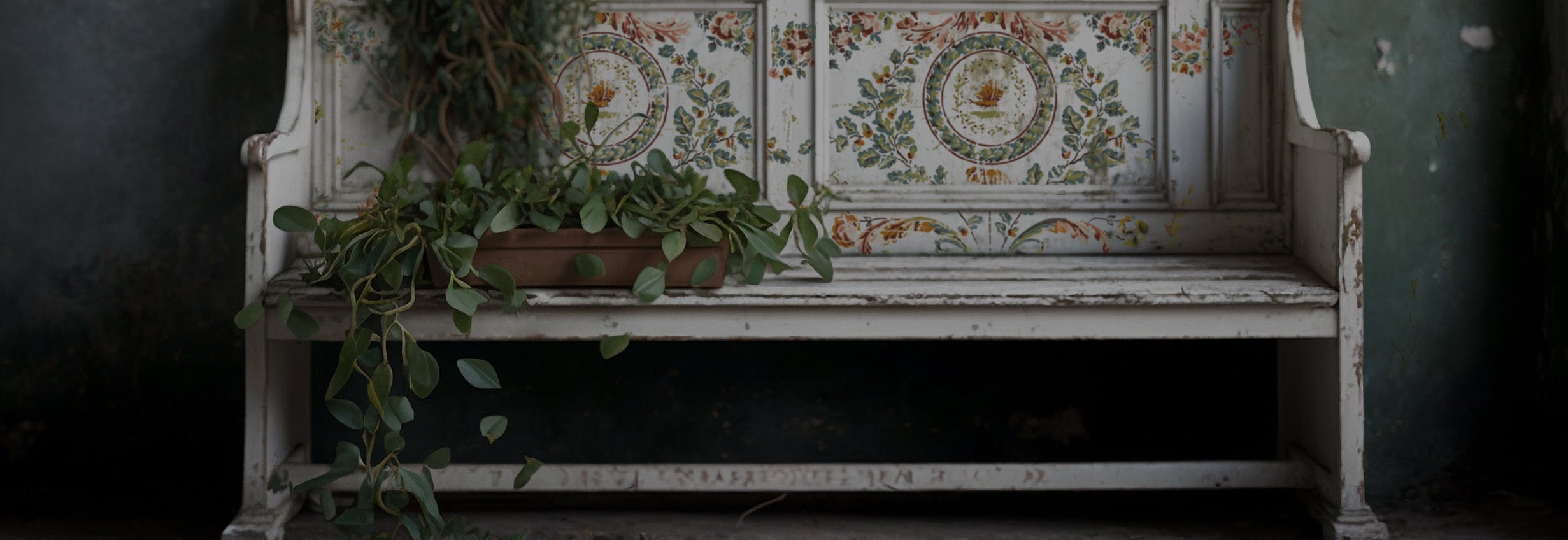Basic Steps for Use
Step 1: Plan the layout of your designs for your surface.
Step 2: Using the grids on the backside of the inlay sheet, trim as needed and set aside. If you are using a repeat pattern and lining the pattern up continuously, then trim the excess margin on each sheet.
Step 3: On an appropriately prepared surface, apply a generous and even coat of mineral-based chalk-type paint. Work in small sections to manage the paint-drying window as you work, generally not larger than 12"x16".
Step 4: While the paint is still wet, lay the paint inlay sheet, design side down (grids are printed on the back for easy identification of front and back), into the wet paint, keeping it taut.
Step 5: Spritz lightly with an even mist of water. Using a smooth damp sponge, soft folded cloth, or the small IOD Silicone Paint Blade, pat down with even light pressure to make sure the design makes good contact with the painted surface. Avoid excessive moving or dragging of the Paint Inlay sheet once it is laid down, as this can cause blur or smear.
Step 6: Repeat steps 3-5 to complete your design, lining up your sections as appropriate. The gridlines can help to match pattern edges when needed.
Step 7: Allow the Inlay to dry to the touch. Drying times can vary anywhere from 10 minutes to one hour, depending upon conditions.
Step 8: When ready to remove the Paint Inlay sheets from your surface, spritz evenly with water, and allow 30 seconds to absorb; this helps the backing to release. Starting at one corner, gently pull the paper up, keeping it at a low angle. It should come up easily without tearing. If it does not, spritz a second time and wait a moment, then try again.
Step 9: If desired, you can use water to blend out or soften the design, because the pigment is still movable and active. You can even add additional colors.
Step 10: Once you’re happy with the Paint Inlay design, allow your project to fully dry. Dry time will vary depending on the thickness of the paint coats, how much water was used in the process, the room temperature, and weather conditions. If the surface is cold to the touch, it is not completely dry. To be sure, wait 24 hours.
Step 11: Now, it’s time to seal it.
